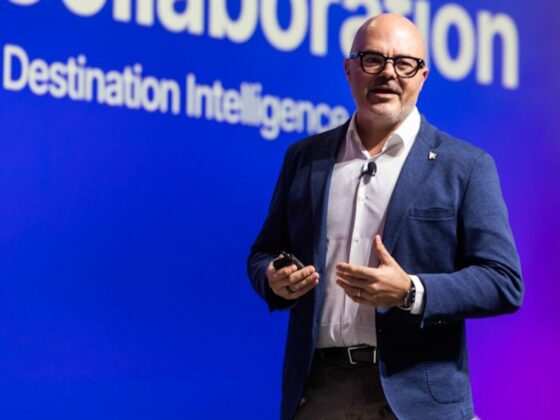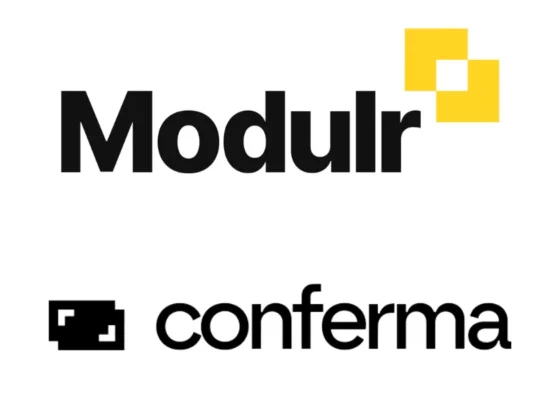
A Tale of Two General Managers
A. Mark: The Cost-Focused General Manager
Meet Mark, the general manager of the Grandview Hotel, a mid-sized establishment facing declining profits. Under pressure from corporate headquarters to improve the bottom line, Mark decides that cutting costs is the quickest solution. He implements a series of austerity measures:
- Reducing Staff Hours: Mark reduces employee hours, leading to a leaner workforce.
- Scaling Back Amenities: The GM eliminates complimentary services like welcome drinks and free breakfast.
- Postponing Maintenance: Makr also delays regular maintenance and upgrades to save money.
At first glance, these measures seem adequate. The hotel’s monthly expenses drop and the financial reports immediately improve. The owners are thrilled with Mark’s performance and satisfied with the quick results. Recognizing his apparent success in boosting profitability, they promote him to manage a larger hotel within the same group, praising his cost-cutting acumen.
However, shortly after Mark’s departure, the Grandview Hotel begins to feel the repercussions of his cost-cutting measures:
- Declining Service Quality: With fewer team members, check-in lines grow longer, and housekeeping becomes less efficient.
- Deteriorating Facilities: Deferred maintenance leads to minor issues like leaky faucets and faulty air conditioning, becoming major guest complaints.
- Negative Reviews: Dissatisfied guests leave poor reviews online, tarnishing the hotel’s reputation.
Employee morale also suffers. Overworked and undervalued, staff members seek employment elsewhere, leading to high turnover rates. Training new employees becomes a constant cycle, further straining resources.
A decline in revenue overshadows the initial savings from cost-cutting. Occupancy rates drop as potential guests choose competitors with better reviews and services. The Grandview Hotel is in a worse financial position than before, trapped in a cycle of diminishing returns.
B. Sarah: The Quality and Revenue-Focused General Manager
In contrast, let’s look at Sarah, the general manager of the Seabreeze Resort, who faces similar financial challenges. Instead of cutting costs, Sarah takes a different approach, enhancing quality and boosting revenue.
- Investing in Staff Training: She implements comprehensive training programs to improve service delivery and empower employees.
- Enhancing Guest Experience: Sarah introduces new amenities like personalized welcome kits and upgrades common areas with modern decor.
- Leveraging Technology: The hotel adopts a mobile app for easy booking and communication and installs innovative room features for guest comfort.
However, the owners of the Seabreeze Resort are not enthusiastic about Sarah’s strategy. They are skeptical that focusing on revenue and investing in quality will yield the desired results. Concerned about the immediate financial implications, they doubt that this approach is the right way to improve the hotel’s performance and pressure Sarah to consider cost-cutting measures instead.
Despite the owners ‘ doubts, Sarah remains convinced that her strategy will pay off. She presents detailed plans and market research, demonstrating how investing in guest experience and staff training can increase revenue. Though hesitant, the owners agreed to give her plan a chance but set strict performance targets and timelines.
To increase revenue, Sarah explores new opportunities:
- Targeted Marketing Campaigns: She identifies and markets to niche segments like eco-tourists, wellness travelers, and remote workers seeking extended stays.
- Diversifying Services: The hotel starts hosting local events, offering spa and wellness packages, and partnering with tour operators for exclusive guest experiences.
- Loyalty Programs: Sarah introduced a rewards system to encourage repeat bookings and referrals and to build long-term relationships with guests.
Progress is gradual initially, and the owners grow increasingly anxious. Monthly financial reports show higher expenses without a significant immediate increase in revenue. They question Sarah’s decisions and urge her to reconsider her approach, suggesting that perhaps a mix of cost-cutting is necessary.
Sarah, however, continues to focus on her strategy, confident in its long-term benefits. She communicates openly with the owners, sharing positive guest feedback, early indicators of improved staff performance, and incremental increases in bookings. She requests patience, emphasizing that sustainable growth takes time.
Over the next few months, the results begin to materialize:
- Positive Reviews: Guests are delighted by the enhanced services and personal touches, leaving glowing reviews online. The hotel’s rating on travel sites improves significantly.
- Increased Occupancy Rates: The hotel’s occupancy rates rise as it becomes a preferred choice for travelers seeking quality experiences. Word-of-mouth referrals and social media buzz contribute to this surge.
- Employee Satisfaction: Staff morale improves markedly. Employees feel valued and take pride in their work, leading to exceptional service that enhances guest satisfaction.
The hotel’s revenue starts to grow, not just from higher occupancy but also from the additional services and packages offered. Ancillary revenues from spa treatments, dining, and events contribute to a healthier bottom line.
Impressed by the turnaround, the owners recognize Sarah’s effective leadership and innovative approach. They appreciated it, acknowledging that her focus on quality and revenue was the right strategy. They commend her for her persistence and vision, which have improved the hotel’s financial performance and strengthened its reputation in the market.
They show their appreciation by:
- Public Recognition: Praising her efforts in company communications and industry forums.
- Support for Further Initiatives: Providing additional resources for her to continue innovating and expanding the hotel’s offerings.
- Professional Advancement: Discuss opportunities for Sarah to take on a more prominent role within the company, leveraging her successful strategy across other properties.
Better Before Cheaper: The Impact of Their Choices
A. The Short-Lived Success of Cost-Cutting
Mark’s focus on cutting costs led to immediate financial improvements, earning him praise and a promotion. However, his departure before the negative effects became apparent left the Grandview Hotel vulnerable:
- Delayed Consequences: The hotel owners initially believed Mark’s strategies were effective, not realizing the long-term damage they were inflicting.
- Erosion of Quality: The cost-cutting measures began to degrade the guest experience shortly after he left.
- Reputation Damage: Accumulating negative reviews harmed the hotel’s brand, making recovery more challenging.
B. The Sustainable Growth from Quality Investment
Sarah’s strategy of prioritizing quality over cost required patience and investment but resulted in lasting benefits:
- Enhanced Guest Loyalty: Exceptional experiences encouraged repeat visits and word-of-mouth referrals.
- Competitive Advantage: The Seabreeze Resort stood out in a crowded market by differentiating on quality.
- Financial Stability: Revenue growth through added value led to sustainable profitability.
Revenue Before Cost: Focusing on Growth
A. Mark’s Missed Opportunities
By fixating on cutting expenses, Mark overlooked opportunities to grow revenue:
- Lack of Innovation: Mark did not offer any new services or experiences to attract guests.
- Marketing Neglect: With a reduced budget, marketing efforts dwindled, lessening the hotel’s visibility.
- Short-Term Mindset: The focus on immediate savings ignored the importance of long-term guest satisfaction.
B. Sarah’s Revenue-Driven Approach
Sarah, however, capitalized on revenue-generating strategies:
- Upselling and Cross-Selling: Offering packages and add-ons increased the average spend per guest.
- Market Adaptation: Recognizing trends like wellness tourism and remote work, she offered specialized packages catering to these markets.
- Partnerships: Collaborations with local businesses and attractions created mutual benefits and enhanced guest experiences.
By focusing on revenue before cost, Sarah ensured that the hotel’s financial health was driven by growth rather than just savings, providing a more robust foundation for success.
Lessons Learned
A. The Illusion of Success Through Cost-Cutting
Mark’s experience underscores the risks associated with a cost-cutting focus:
- Superficial Gains: Immediate financial improvements can mask underlying issues that will surface later.
- Delayed Fallout: Departing before problems arise can leave the next management team to deal with the consequences.
- Damaged Reputation: Once a hotel’s reputation suffers, rebuilding trust with guests can be lengthy and costly.
B. The Rewards of Investing in Quality and Revenue
Sarah’s story illustrates the advantages of prioritizing quality and revenue, even in the face of skepticism:
- Guest Satisfaction: Investing in quality enhances the guest experience, fostering loyalty.
- Employee Engagement: Valued employees are more productive and provide better service.
- Long-Term Success: Revenue growth through added value leads to sustainable profitability and a strong market position.
- Leadership Recognition: Persistence in the face of doubt can lead to professional recognition and advancement.
Conclusion
The contrasting stories of Mark and Sarah highlight a fundamental principle in the hotel industry: success is achieved not by relentlessly cutting costs but by investing in quality and focusing on revenue growth. While Mark’s cost-cutting measures brought him short-term recognition and promotion, they left the Grandview Hotel grappling with declining quality and revenue. In contrast, Sarah faced skepticism and doubt from the owners but remained steadfast in her commitment to enhancing value. Her persistence improved the hotel’s financial performance and earned her the owners’ appreciation and recognition.
Reflect on your strategies
Hotel managers should reflect on their strategies and consider shifting their focus from merely saving costs to creating exceptional guest experiences and exploring new revenue streams. Even when faced with doubt or pressure to cut expenses, believing in a quality-focused approach can lead to greater rewards. By doing so, they enhance their hotel’s reputation and build a strong foundation for long-term growth and personal career advancement.
Closing Thought
In the hospitality industry, true success isn’t about cutting corners to be the cheapest option. It’s about investing in quality and innovation to offer the best possible experience—something guests are willing to pay for and remember long after their stay. Even if the path requires overcoming skepticism and demonstrating patience, the hotel’s and its leadership’s rewards can be substantial and enduring.
Additional Reflection
Sarah’s journey underscores the importance of leadership resilience and vision. Her ability to stay committed to her strategy, communicate effectively with the owners, and deliver results despite initial setbacks is a testament to the value of focusing on long-term gains over short-term fixes. It also highlights the role of supportive ownership when they choose to trust and empower innovative management approaches.
For hotel owners and stakeholders, Sarah’s story reminds them to look beyond immediate financial statements and consider the broader impacts of management decisions on guest satisfaction, employee morale, and brand reputation. Investing in quality may require patience and a willingness to take calculated risks, but the long-term benefits can far outweigh the temporary comfort of cost-cutting.






